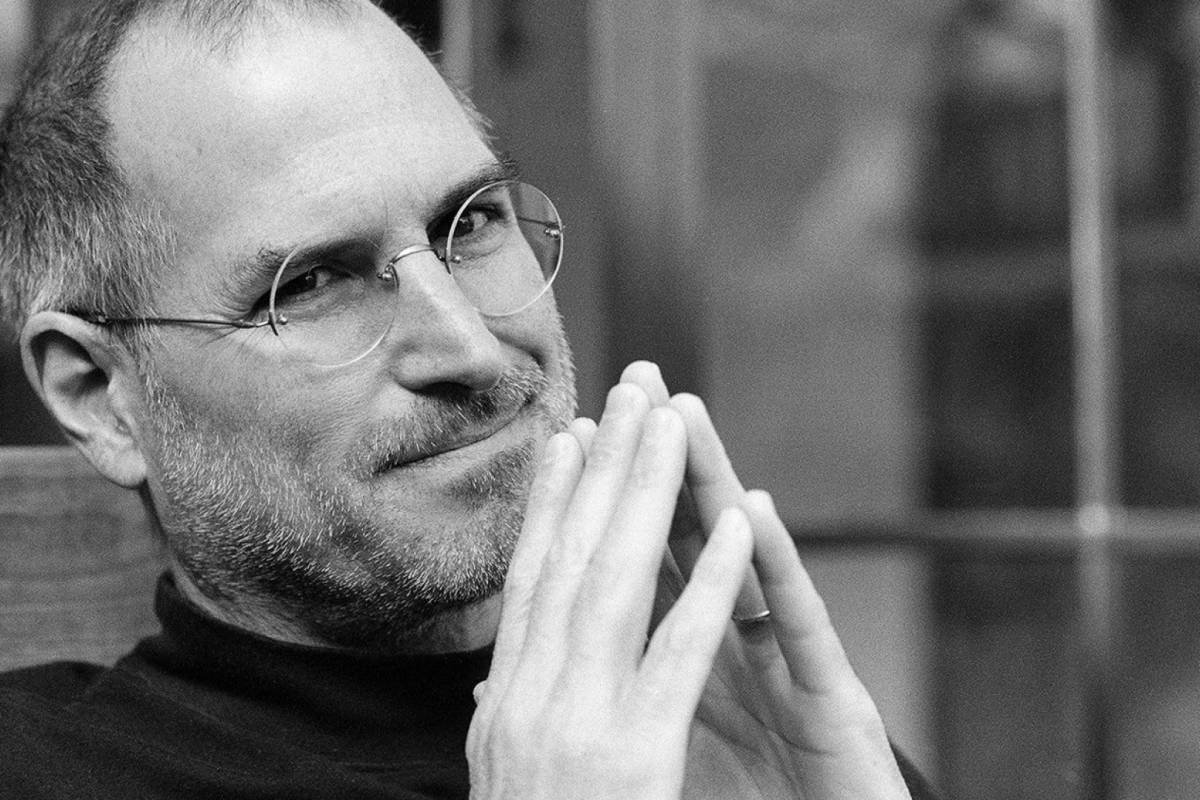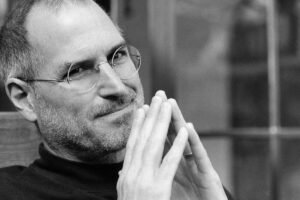Steve Jobs was more than just a businessman—he was a visionary who reshaped the way we interact with technology. As the co-founder and face of Apple Inc., Jobs combined technical intuition, design obsession, and relentless ambition to create some of the most iconic products of the digital age. From the original Macintosh to the iPhone, Jobs’ influence is embedded in the daily lives of billions of people around the world.
Yet his journey was far from smooth. Jobs’ life was marked by radical swings—from celebrated prodigy to ousted CEO, and later, triumphant return. Along the way, he revolutionized multiple industries: computing, animation, music, telecommunications, and media. His story is one of innovation, failure, reinvention, and the enduring power of ideas.
Table of contents
Early Life and the Birth of Apple
Steve Jobs was born on February 24, 1955, in San Francisco, California, and adopted shortly after birth. Raised in the Silicon Valley area by Paul and Clara Jobs, Steve grew up surrounded by the growing world of electronics and innovation. He met Steve Wozniak at Homestead High School, and their mutual fascination with computers laid the groundwork for what would become a historic partnership.
Jobs briefly attended Reed College in Oregon but dropped out after just one semester, opting instead to audit classes that interested him—including calligraphy, which would later influence Apple’s design philosophy. In 1976, in a Los Altos garage, Jobs and Wozniak founded Apple Computer. Their first product, the Apple I, was a modest success, but the Apple II, launched in 1977, marked a turning point—it was among the first highly successful mass-produced personal computers.
With Jobs as the charismatic pitchman and Wozniak as the technical brain, Apple quickly attracted attention. By 1980, the company went public, and Jobs was a millionaire at age 25. But internal tensions and strategic disagreements would soon lead to major upheaval.
The Macintosh Revolution and Jobs’ Departure
In 1984, Apple introduced the Macintosh, the first personal computer with a graphical user interface and a mouse. Its famous Super Bowl commercial, directed by Ridley Scott, announced the arrival of a new era. While the Macintosh didn’t initially dominate the market, it was a bold leap forward that changed expectations for how computers should look and feel.
Jobs, ever the perfectionist, clashed frequently with colleagues and board members. His management style was intense—equal parts inspiring and intimidating. By 1985, the tensions boiled over. After a power struggle with then-CEO John Sculley, Jobs was forced out of the company he had co-founded.
At just 30 years old, Jobs found himself exiled from Apple. But rather than retreat, he threw himself into new ventures. That same year, he founded NeXT, a computer company aimed at higher education and business. Around the same time, he purchased a small animation studio from George Lucas. That studio would become Pixar.
Pixar, NeXT, and the Road Back to Apple
Pixar’s early days were financially uncertain, but Jobs believed in its creative potential. His patience paid off in 1995 with the release of Toy Story, the world’s first fully computer-animated feature film. The movie was a global success, turning Pixar into a powerhouse and Jobs into a Hollywood player. In 2006, Pixar was sold to Disney in a $7.4 billion deal, making Jobs the largest shareholder in Disney.
Meanwhile, NeXT struggled to gain traction in a crowded computer market, but its software architecture was admired. In 1996, Apple—then floundering without Jobs—acquired NeXT for $429 million. This move not only brought NeXT’s technology into Apple but also returned Steve Jobs to the company that had once ousted him.
He returned as an advisor, then interim CEO, and finally as full CEO in 2000. Apple was nearly bankrupt when Jobs took over—but he was about to lead one of the greatest turnarounds in corporate history.
The Golden Age: iMac, iPod, iPhone, and iPad
Jobs’ second tenure at Apple is the stuff of legend. He brought focus, clarity, and a design-first mindset to the company. His first major product launch was the iMac in 1998, a colorful, all-in-one computer that stood out in a market of beige boxes. It was a commercial hit and signaled that Apple was back.
But Jobs wasn’t interested in just reviving Apple’s computer business. In 2001, Apple released the iPod, revolutionizing how people listened to music. iTunes followed soon after, upending the traditional music industry model and making digital downloads mainstream.
Then, in 2007, came the iPhone—a product that combined a phone, iPod, and internet communicator into one sleek device. With it, Jobs didn’t just enter the smartphone market; he redefined it. The iPhone became the blueprint for the modern smartphone, spawning an entire ecosystem of apps and changing how humans interact with technology.
In 2010, the iPad expanded the reach of Apple’s ecosystem even further, creating a new category between phone and laptop. Each launch event became a global spectacle, and Jobs himself, in his trademark black turtleneck and jeans, became one of the most recognizable business figures in the world.
Illness, Legacy, and Cultural Impact
In 2003, Jobs was diagnosed with a rare form of pancreatic cancer. He initially resisted conventional treatment, opting for alternative approaches before eventually undergoing surgery. His health became a subject of intense media speculation in the years that followed, as his weight fluctuated and his public appearances grew more limited.
Despite his illness, Jobs continued to work. He remained involved in product development and company strategy, often micromanaging key design details. In 2011, he officially resigned as CEO, handing the role to Tim Cook, but remained Chairman of the Board until his death on October 5, 2011.
Steve Jobs’ legacy is difficult to overstate. He transformed consumer technology and created products that redefined entire industries. But beyond devices, Jobs influenced design thinking, marketing, and leadership. He proved that intuition, simplicity, and passion could be as powerful as spreadsheets and strategy.
Critics have pointed to his mercurial temperament and harsh management style, but even they acknowledge the magnitude of his achievements. Jobs didn’t just build products—he shaped culture.
Conclusion: A Legacy of Innovation
Steve Jobs lived a life defined by vision, disruption, and reinvention. From the garage in Los Altos to the global stage, his story is a testament to how one person’s ideas can reshape the world. He wasn’t an engineer in the traditional sense, nor a conventional CEO—but he was a master at seeing the future and pulling it into the present.
Today, Apple continues to thrive, but the blueprint that made it a global icon still bears Jobs’ imprint: clean design, seamless integration, bold ambition, and attention to every detail. His influence extends far beyond Apple—to every startup that dreams of changing the world and every designer who believes that form matters as much as function.
In remembering Steve Jobs, we remember not just a businessman or a tech innovator, but a storyteller, a provocateur, and above all, a creative force who believed that great ideas, executed beautifully, could truly put a dent in the universe.















Leave a Reply
You must be logged in to post a comment.